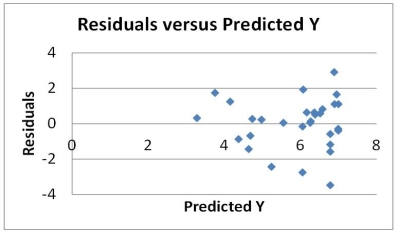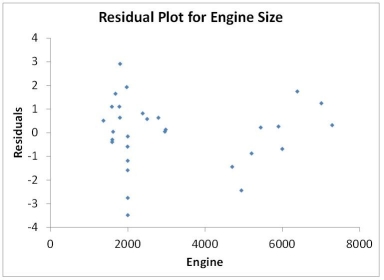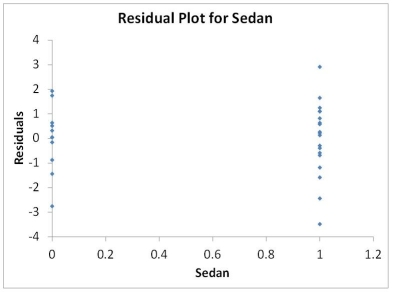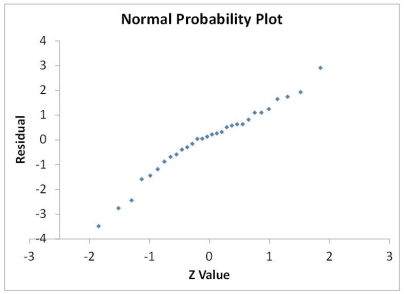Multiple Choice
TABLE 14-16
What are the factors that determine the acceleration time (in sec.) from 0 to 60 miles per hour of a car? Data on the following variables for 30 different vehicle models were collected:
Y (Accel Time) : Acceleration time in sec.
X1 (Engine Size) : c.c.
X2 (Sedan) : 1 if the vehicle model is a sedan and 0 otherwise
The regression results using acceleration time as the dependent variable and the remaining variables as the independent variables are presented below.  The various residual plots are as shown below.
The various residual plots are as shown below. 


 The coefficient of partial determinations
The coefficient of partial determinations  and
and  are 0.3301,and 0.0594,respectively.
are 0.3301,and 0.0594,respectively.
The coefficient of determination for the regression model using each of the 2 independent variables as the dependent variable and the other independent variable as independent variables (  ) are,respectively 0.0077,and 0.0077.
) are,respectively 0.0077,and 0.0077.
-Referring to Table 14-16,which of the following assumptions is most likely violated based on the residual plot for Engine Size?
A) Linearity
B) Normality of errors
C) Independence of errors
D) None of the above
Correct Answer:

Verified
Correct Answer:
Verified
Q91: TABLE 14-16<br>What are the factors that determine
Q92: TABLE 14-15<br>The superintendent of a school district
Q93: TABLE 14-18<br>A logistic regression model was estimated
Q94: TABLE 14-19<br>The marketing manager for a nationally
Q98: TABLE 14-8<br>A financial analyst wanted to examine
Q99: TABLE 14-18<br>A logistic regression model was estimated
Q100: TABLE 14-6<br>One of the most common questions
Q101: TABLE 14-6<br>One of the most common questions
Q174: TABLE 14-5<br>A microeconomist wants to determine how
Q312: TABLE 14-3<br>An economist is interested to see